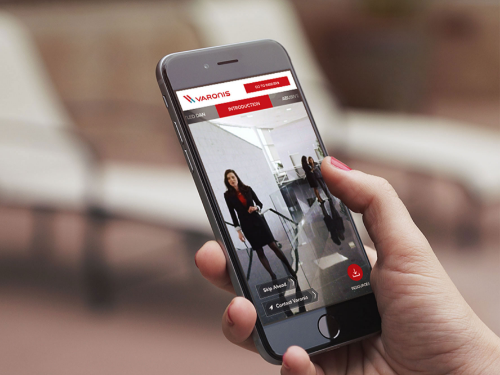Whether you’re a reader or a listener, we’ve got you covered! Listen to the podcast version of this post for a fresh take.
As brands increasingly compete for attention, delivering immersive experiences has become essential. At Bluetext, we believe Augmented Reality (AR) and Virtual Reality (VR) offer untapped potential for transforming video content into interactive, engaging experiences. Let’s explore how incorporating AR and VR into your video strategy can captivate your audience and drive meaningful engagement.
Why AR and VR?
Both AR and VR bring depth and interactivity to traditional video formats. AR overlays digital elements onto the real world, allowing users to experience enhanced realities through their mobile devices or smart glasses. VR, on the other hand, transports viewers into entirely new environments using headsets, creating fully immersive experiences. By combining these technologies with video content, brands can engage customers on a deeper level, offering them an experience they won’t forget.

1. AR in Video Content: Layered Engagement
Integrating AR into video content allows for a layered experience. Imagine viewers scanning a video with their smartphone and accessing additional product details, 3D models, or virtual try-ons. This technology enables personalized and interactive customer journeys, which can significantly increase engagement and conversion rates. For example, a retail brand could showcase a video of a new product line, while AR allows users to visualize the items in their own space, bringing an added sense of practicality and excitement to the viewing experience.
2. VR in Video: Full Immersion
VR, while requiring more specialized equipment, offers a fully immersive environment that can revolutionize customer experiences. This technology is particularly effective in industries like real estate, travel, and entertainment, where the ability to transport viewers into another location or scenario can influence purchasing decisions. Imagine walking through a luxury hotel suite or exploring a new car model without leaving your home. VR allows your audience to interact with your product in an unparalleled way, turning passive viewing into an active experience.
3. Best Practices for AR and VR Integration
- Understand Your Audience: Not all customers are ready for AR or VR experiences, so it’s crucial to gauge their tech savviness before implementation.
- Focus on Storytelling: AR and VR should complement your narrative, not overshadow it. The content must remain engaging and relevant to your audience.
- Optimize for Platforms: Ensure that your AR and VR content is optimized for the platforms your audience uses most, such as mobile devices or VR headsets.
- User Experience First: Don’t overload users with too many interactive elements. The goal is to enhance the experience, not complicate it.
The Bottom Line
The future of video content lies in creating immersive and engaging experiences that go beyond the traditional screen. AR and VR provide the perfect tools to do just that. By incorporating these technologies, brands can deliver innovative, memorable content that resonates with their audience and drives higher levels of engagement. At Bluetext, we specialize in helping companies leverage cutting-edge technologies like AR and VR to enhance their video strategies and create unforgettable customer experiences.


